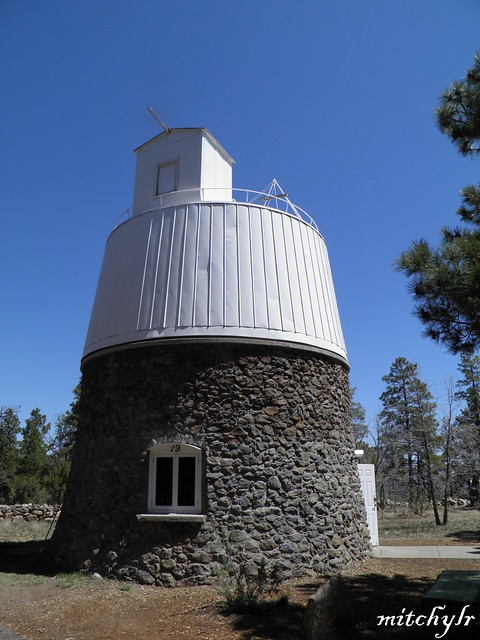Working as a researcher at the Lowell Observatory, in Flagstaff, Arizona, young Clyde Tombaugh was given the task of doing a systematic sky search for 'Planet X', as predicted by the calculations of Percival Lowell and William Pickering. Searching the night skies using the telescope housed within this building, Tombaugh finally found what he was looking for on February 18, 1930. The planet was named PLUTO.

A nice piece of history, Mitch!
ReplyDeleteThanks Linda :-))
DeleteShould you have time, in the near future...would you please see if you can now leave comments on my page? TY
DeleteOk, I'll give it a try.
DeleteInteresting and nice photo. Did not know this info.
ReplyDeleteHi Lynda. Glad you found it interesting :-))
DeleteI was just talking to my brother about planet X two weeks ago LOL
ReplyDeletethis a a great photo of the searcher's search palace :)
LOL. Thanks Danette :-))
DeleteThat was very interesting and, of course, a great picture to go along with. I am told that many discoveries have been made by "amateur" or neophyte astronomers, but I didn't know about Pluto.
ReplyDeleteThanks Benni :-)) The role of the amateur has always been important in astronomy. Whereas the big professional observatories concentrate on particular areas of study, amateurs look at a wider area. Many comets and asteroids are discovered by amateur astronomers.
DeleteThanks for giving me the chance to learn something I didn't know... Excellent picture of this interesting structure...
ReplyDeleteThanks Belita :-))
DeleteHow nice they well kept this building.
ReplyDeleteHi Sophie. It is still part of the Lowell Observatory, although no longer used for observation.
DeleteInteresting entry.
ReplyDeleteThank you :-))
DeleteIt is interesting how our language evolves. Since Pluto is no longer officially a planet, a new word had entered the lexicon. If a person has been demoted it is said he was "Plutoed."
ReplyDeleteI guess it wouldn't be very PC to call them a dwarf though ;-))
DeleteI knew that Planet Pluto was the last to be discovered in 1930, thanks to reading the book by patrick Moore. A very good and interesting entry.
ReplyDeleteThanks Pat :-))
DeleteI love it mate a very cool take on the theme;)
ReplyDeleteThanks Baz :-)) I knew you'd like this one!!
Deletewhat a very nice little building, as well as an interseting piece of history.
ReplyDeleteThanks Loretta :-))
Delete